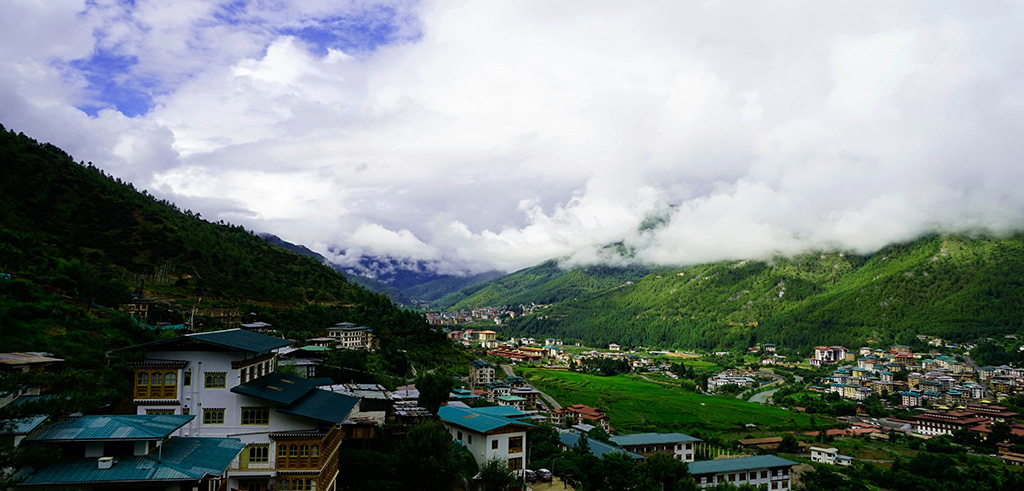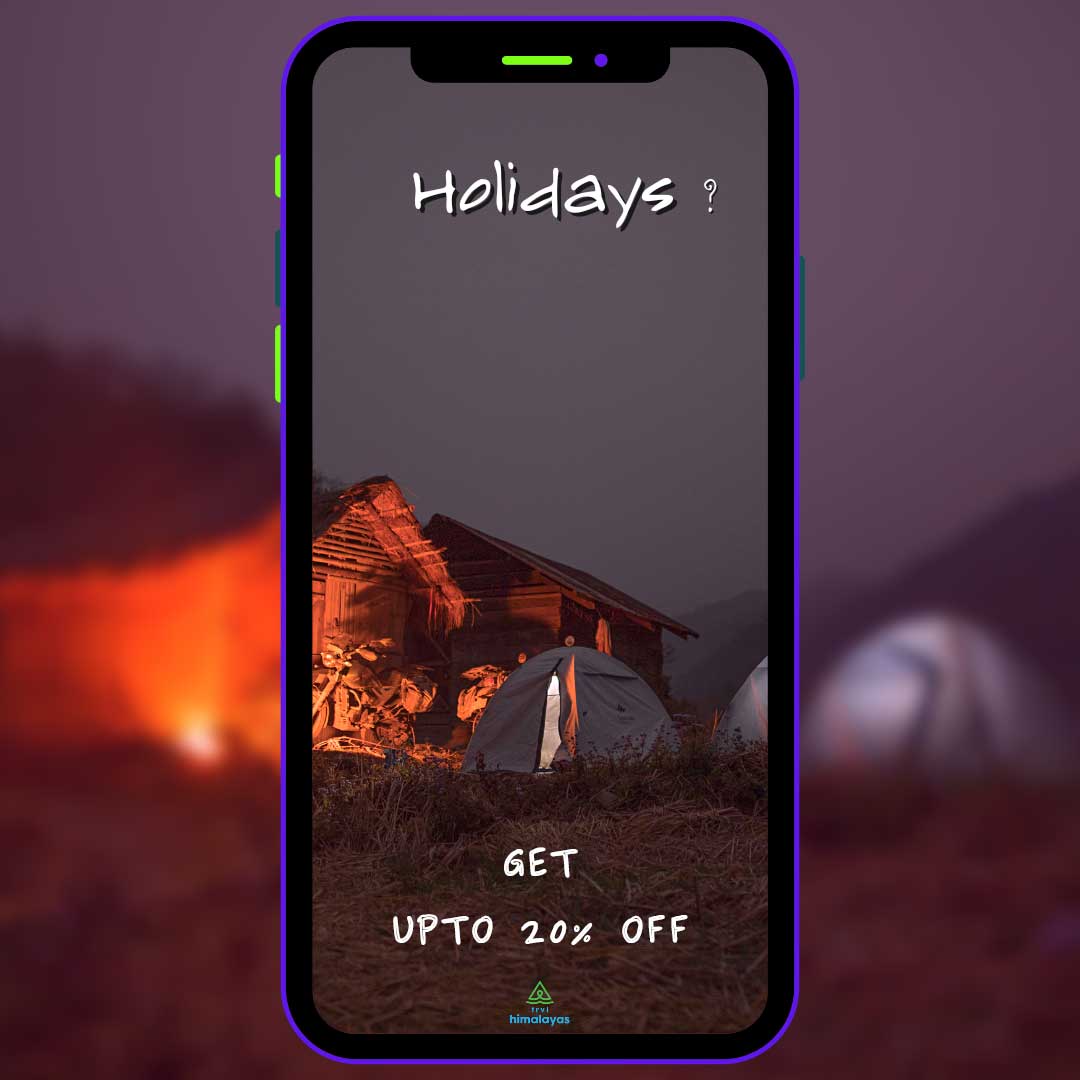






[ARRIVAL] Arrive at Paro International Airport and Drive to Thimphu Arrive at Paro International Airport. you will be welcomed by a
representative and briefed by the tour guide then immediately transferred to Thimphu. Thimphu is the centre of government, religion and commerce. The
capital has an interesting combination of tradition and modernity and includes some of the most advanced and remotest parts of the kingdom. It is home
to the Kings and the Royal family members, civil servants, expatriates, politicians, business persons and monks. Enjoy this cultural mix based on
livelihood. Of culture, we will take you through temples, dzongs, chortens, museums, handicraft stores, nunneries, parks and many more. Allow yourself
to meet both traditional and contemporary artists.
National Memorial Chorten - Meet the elderly generation in circumambulation at the National Memorial Chorten. Chorten means ‘Seat of Faith’ and
Buddhists
often call such monuments, the ‘Mind of Buddha’. Treat yourself to the fantastic depiction of Buddhist teachings in the form of paintings and sculptures
at this temple. As the name denotes this National Memorial Chorten was consecrated on July 28, 1974, in memory of the Third King.
Buddha Point - Located at Kuenselphodrang Nature Park, the 169 feet bronze statue of Buddha Dordenma, Vajra Throne Buddha makes it one of the largest
Statues of Buddha in the world. The Buddha Dordenma symbolizes indestructibility, and it is said to emanate an aura of peace and happiness to the entire
world. The Buddha statue will be completed soon. Currently waiting for the completed paintings but visitors can drive up to the Buddha point and view
the tallest statue of Lord Buddha. The view of Thimphu valley from the Buddha point is spectacular and beautiful, especially at night.
Thimphu Dzong – The fortress of the glorious religion” was initially constructed in 1612 and restored by the Third King Jigme Dorji Wangchuck in the
1960s. Tashichhodzong houses some ministries, His Majesty’s secretariat, and the central monk body.
Simply Bhutan – A living museum and a photo studio with a mission to engage and empower youth entrepreneurs through preservation, promotion and
showcasing of Bhutanese tradition and cultural diversity.
[Transfer to Phunakha from Thimphu Punakha]
The ancient capital of Bhutan, about two and half hour drive from Thimphu across Dochu-la pass. Once you cross the pass, you wind down into a warm
fertile valley and meander along a gently flowing aquamarine river that leads you to the Punakha Dzong, the second dzong to be built in Bhutan.
Dochula Pass - At 3,150 meters, this beautiful pass located on the way to Punakha from Thimphu offers a stunning 360-degree panoramic view of Himalaya’s
mountain range with its 108 chortens that was built by Her Majesty the Queen Mother Ashi Dorji Wangmo Wangchuck. The pass is also a popular spiritual
destination for both locals and tourists.
Druk Wangyal Chorten - The construction of 108 chortens was commissioned by Her Majesty the Queen Mother Ashi Dorji Wangmo Wangchuck to commemorate the
victory over the Indian militants and to liberate the souls of the lives lost.
Chhimi Lhakhang - Chimi Lhakang also known as Fertility Temple located in the beautiful village of Sopsokha right before the junction in Lobesa. The
monastery stands on a small hill close to the village of Lobesa and was constructed in 1499 by Ngawang Choegyel, the 14th Drukpaheirarch. This monastery
is dedicated to Lama Drukpa Kunley 'Divine Madman' known for his outrageous behaviour. The existing footpath to Chimi Lhakhang passes through beautiful
terraces of paddy fields. It is about a 30-minute walk across the field from the road to the temple. "The Divine Madman, Drukpa Kinley is a famous
teacher with whom the phallic symbol is associated. Tales told by your guide would have excited you to visit Chhimi Lhakhang. The Divine Madman sits
there through a statue this time. Do not miss the master's deeds painted on the walls. Japanese and several American couples visited this temple and
were blessed miraculously with children.
Punakha Dzong - Phunakha Dzong is placed strategically at the junction of the Pho Chu and Mo Chu rivers, the Dzong was built in 1637 by Zhabdrung
Ngawang Namgyal to serve as the religious and administrative seat of the region. It was here that the dual system of government was introduced in the
17th century and in 1907, enthroned the first King GongsarUgyen Wangchuck. Damaged over the centuries by four catastrophic fires and an earthquake, the
Dzong has been fully restored in recent years by the 4th King Jigme Singye Wangchuck.
The Dzong enriches your trip with the opportunity to see the highest standards in woodwork. Do not miss the massive Kuenray, the Coronation Hall of all
Bhutanese kings, the Dzong Chung at the entrance to the Dzong and the cantilever bridge over the Mochu that has been recently renovated.
[Phunakha to Paro Paro Valley]
The beautiful valley is home to many of Bhutan's old monasteries and temples. The valley is also home to Mount Chomolhari (7,300 meters) situated at the
northern end of the valley whose glacier water forms the Pachu flowing through the valley.
Paro Dzong (aka Ringpung Dzong) - Explore the Rinpung Dzong, which the locals call the ‘fortress of a heap of jewels’. Built-in 1646 by Zhabdrung
Ngawang Namgyal, the dzong stands on a hill above Paro Township. It is linked by the traditional cantilever bridge (called the Nemi Zam) over the Pa Chu
where one may pose a photograph.
National Museum (Ta-Dzong) - On a ridge immediately above Rinpung Dzong is Ta Dzong, originally built as a watchtower. In 1968, Ta Dzong was inaugurated
as the first National Museum, and now holds a fascinating collection of art, relics, religious thangka paintings, Bhutan’s exquisite postage stamps,
coins and handicrafts, together with a small natural history collection. Start or end your trip with a visit to this marvellous museum.
Kyichu Lhakhang - Also known as Kyerchu Temple or Lho Kyerchu, is the oldest temple in Bhutan. Just like Jambhay Lhakhang in Bumthang, it is one of the
108 temples built by the Tibetan King Songtsen Gampo to subdue and pin down an ogress that was obstructing the spread of Buddhism. According to legend,
all 108 temples were built in a single night.
Go back in time and history and visit the 7th-century Kyichhu temple. As the name suggests, the temple is a reservoir of peace, where you will feel at
peace here. Next to the temple is the house that is turned into a museum dedicated to the late Dilgo Khyentse Rinpoche. One can come across photographs
and other artefacts belonging to Rinpoche.
[Day trip to Tiger’s Nest]
Are you ready? We will be making the hike up to one of the key highlights in Bhutan today! Tiger's Nest aka Taktsang Monastery.
Taktsang Monastery - Often called the Tiger’s Nest, perched on the cliffs, has awestruck many a visitor. “Trip to Bhutan is never complete without
climbing to Taktsang”, says one tourist. Indeed, it’s true as the journey there fills you with spiritual bliss. For those not choosing the spiritual
side, it is the dramatic, artistically built monument that becomes a hiker’s delight. Take a trip to this dramatically set Buddhist relic hanging from a
cliff. Experience the uphill climb as you ascend more than two thousand feet from the valley floor. According to legends, it is believed that Guru
Rinpoche flew to this location from Tibet on the back of a Tigress (his consort Yeshey Tshogyal) and meditated in one of the caves. Guru Rinpoche
performed meditation and emerged in eight manifestations, and the place became holy, thus gaining the name Tiger's Nest.
Hot Stone Bath - You can go for a locally own Hot Stone Bath, which can take four people at one time. This bath will help loosen your joints, release
muscle tension and invoke a profound sense of relaxation. The cost is approximately INR 1600 per person.
[Departure] Departure After breakfast you will be transfer to the airport and Our representative will see you off and bid farewell at the airport.
